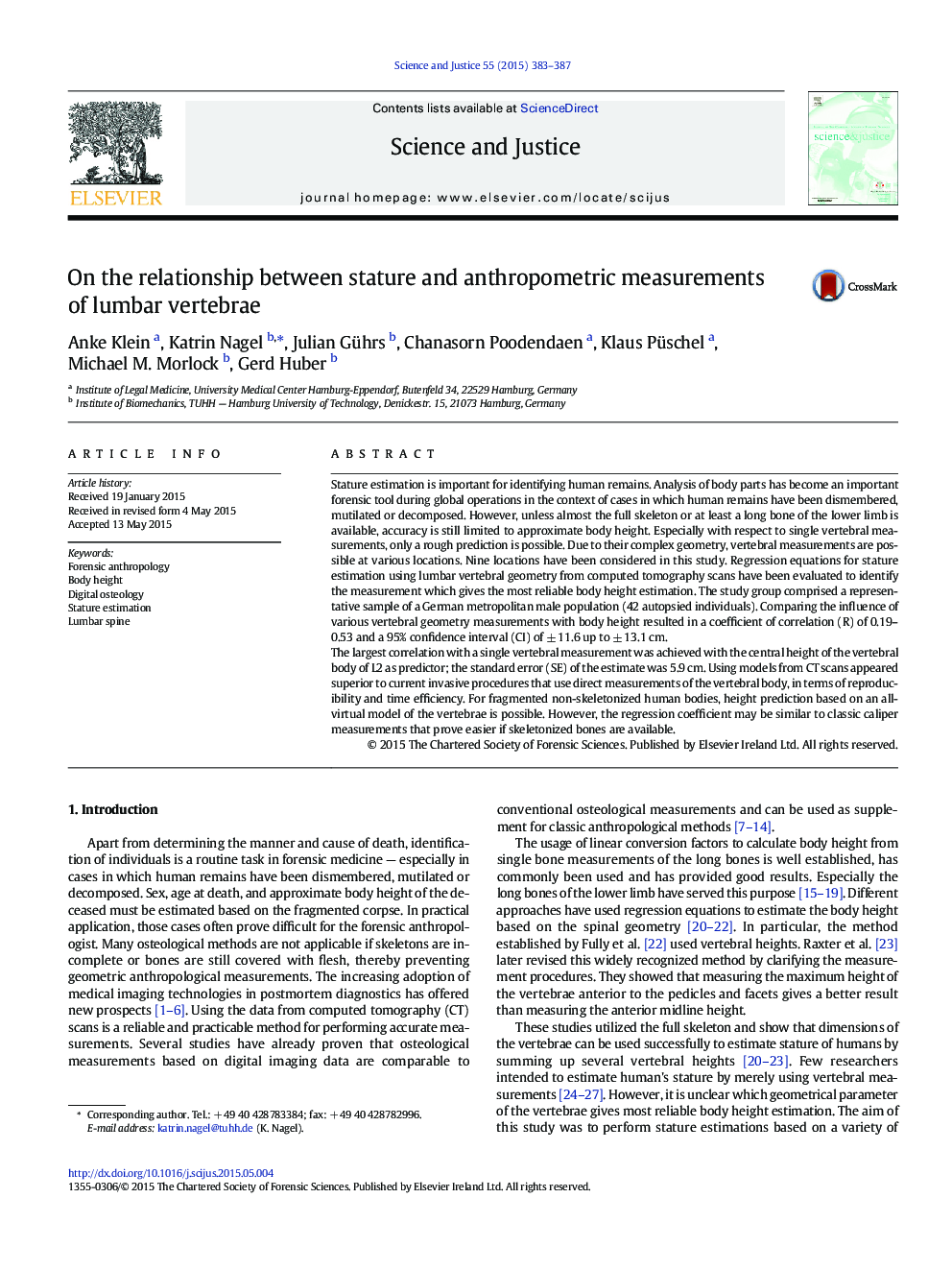| Article ID | Journal | Published Year | Pages | File Type |
|---|---|---|---|---|
| 106896 | Science & Justice | 2015 | 5 Pages |
•Vertebral measures are analyzed regarding their capability of predicting body height.•Digital 3D models, reconstructed from CT scans of lumbar vertebrae, are used.•Height of a single vertebral body is shown to be the best predictor for stature.•The proposed non-invasive method is an improvement on existing approaches.
Stature estimation is important for identifying human remains. Analysis of body parts has become an important forensic tool during global operations in the context of cases in which human remains have been dismembered, mutilated or decomposed. However, unless almost the full skeleton or at least a long bone of the lower limb is available, accuracy is still limited to approximate body height. Especially with respect to single vertebral measurements, only a rough prediction is possible. Due to their complex geometry, vertebral measurements are possible at various locations. Nine locations have been considered in this study. Regression equations for stature estimation using lumbar vertebral geometry from computed tomography scans have been evaluated to identify the measurement which gives the most reliable body height estimation. The study group comprised a representative sample of a German metropolitan male population (42 autopsied individuals). Comparing the influence of various vertebral geometry measurements with body height resulted in a coefficient of correlation (R) of 0.19–0.53 and a 95% confidence interval (CI) of ± 11.6 up to ± 13.1 cm.The largest correlation with a single vertebral measurement was achieved with the central height of the vertebral body of L2 as predictor; the standard error (SE) of the estimate was 5.9 cm. Using models from CT scans appeared superior to current invasive procedures that use direct measurements of the vertebral body, in terms of reproducibility and time efficiency. For fragmented non-skeletonized human bodies, height prediction based on an all-virtual model of the vertebrae is possible. However, the regression coefficient may be similar to classic caliper measurements that prove easier if skeletonized bones are available.
